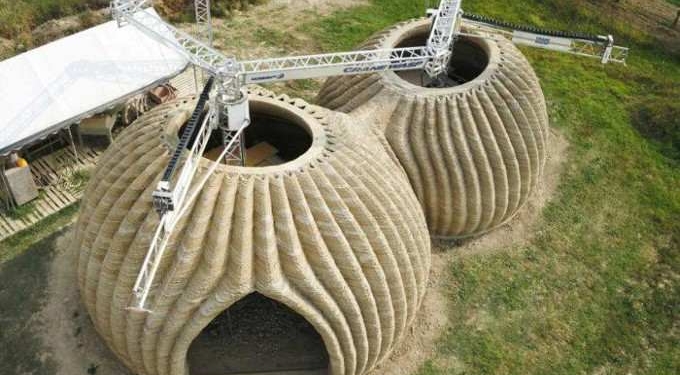
The innovative and unique way of thinking regarding sustainable designing and building of houses has already taken a new step in Italy. Technology has provided us with new and advanced methods in the field of architecture. As a result, the earthen 3D-printed house is rolled out and seen widely nowadays.
Some time ago, a Dutch university project had developed the first 3D printed residential village. Consequently, this earthen 3D-printed house is a ground-breaking innovation in architecture that provides habitable homes to people.
TECLA is the earthen 3D-printed house project in collaboration with WASP and Mario Cucinella Architects. TECLA was born in the Ravenna region of Massa Lombarda in Italy. Additionally, WASP is an Italian firm dealing in engineering as well as construction with the help of 3D printing. Mario Cucinella Architects is a studio owned by the homonymous architect.
Avant-Garde & Eco-Friendly Earthen 3D-Printed House
The population is increasing at an exponentially rapid pace and the available space for habitation is reducing. Consequently, the idea of an earthen 3D-printed house emerged from the desire of offering a home to each human. TECLA is associated with the concept of new circular housing models.
Their houses are made totally with recyclable and reusable materials. Moreover, these materials are collected from the local area. In addition, WASP helps TECLA with the construction of eco-sustainable homes through the most recent 3D technology.
The earthen 3D-printed houses are designed by Mario Cucinella and engineered and constructed with the cutting-edge technology of WASP. These homes are an avant-garde because of the use of raw earth. The earthen materials are locally sourced as well as biodegradable and recyclable at zero kilometers.
This makes the houses not only habitable but also free of any form of waste. TECLA has ensured that the project will provide eco-friendly houses created with waste-free construction materials.

Maker Economy Starter-Kit of WASP will certify that the houses can adapt to various environmental conditions. Likewise, the whole process is self-produced with the help of technological support from WASP. Subsequently, WASP will make sure that the construction process will be fast and efficient.
Nonetheless, the procedure will reduce the generation of industrial waste. Additionally, the earthen 3D-printed houses will boost the local and national economies and ensure the well-being of local communities.
A Combination Of Technology And Sustainability
Massimo Moretti, the WASP CEO, has informed, that the housing project is inspired by the pottery wasp of WASP. They will use Km0 earth and combine old materials with advanced technology to give sustainable 3D clay houses.
Mario Cucinella has stated that their collaboration with WASP in building a 3D printed habitat prototype has been fruitful. The project is a massive change in the field of architecture. The houses are made of ‘earth’ for the ‘Earth’. Finally, the collaboration is combining empathic architecture with the implementation of the latest technology.

TECLA is uniting social utility, functionality, and technology for the creation of earthen 3D-printed houses that will usher in a better future. They are expecting the beginning of sustainable localities and cities through this futuristic project. The UN estimates an 11.2 billion population in the next 80 years.
Besides the rapid urbanization and increasing capitalization leaves more people homeless. Consequently, governments are looking for an innovative solution to housing problems. They are interfacing with private firms to bridge the gap of inhabitable spaces.
The name ‘TECLA’ is inspired by ‘The Invisible Cities’ of Italo Calvino. The earthen 3D-printed house project began in September 2019. The project will conclude soon. The project expects to extend smart communities worldwide through various initiatives.
















